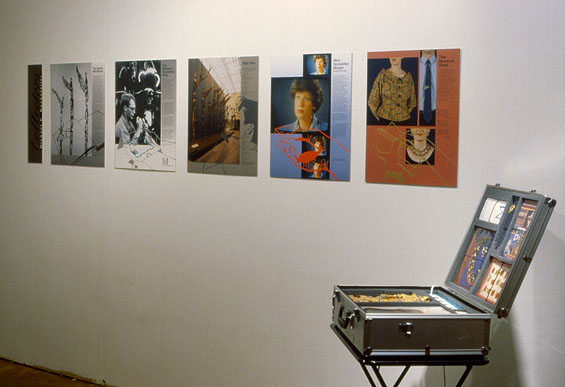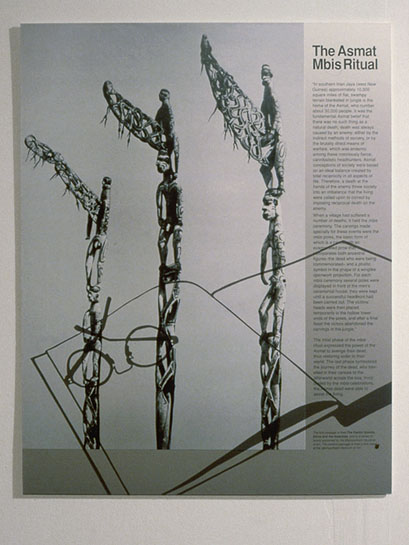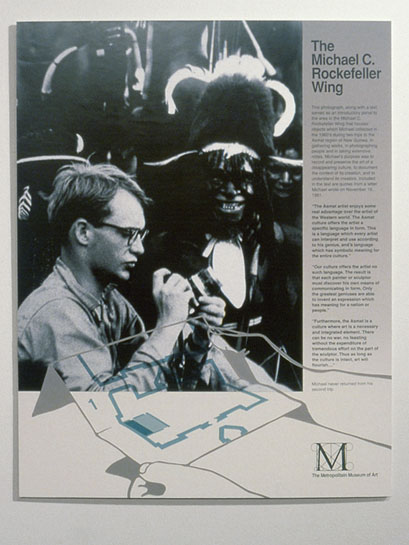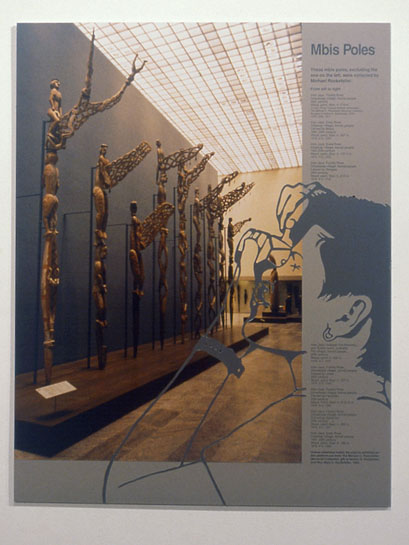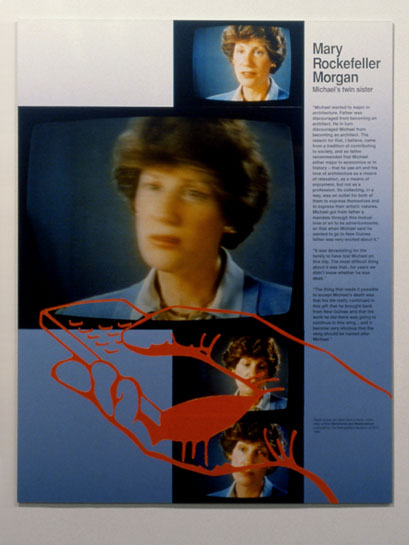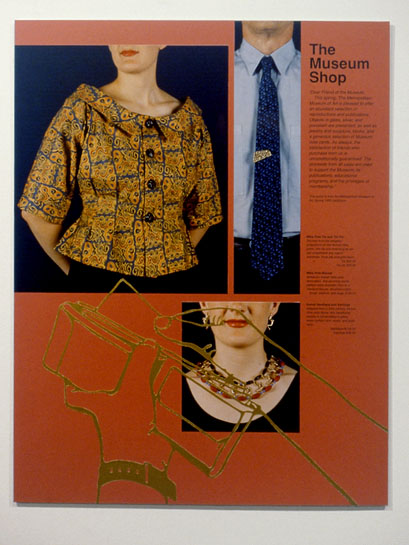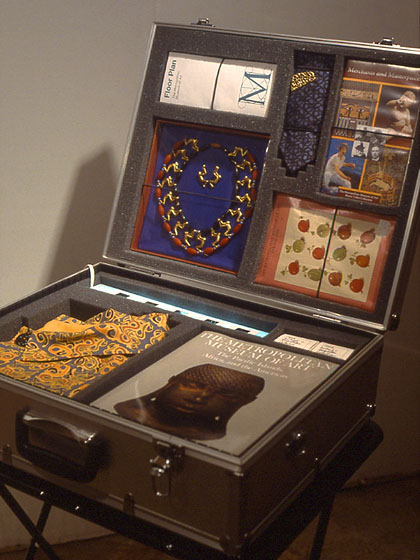Collectors (Michael C. Rockefeller), 1990
Installation
mixed media installation
5 posters (17 x 22 inches), suitcase (21 x 17 x 8 inches)
Collectors traces the history of a group of Asmat memorial death poles from their origins in New Guinea into the Metropolitan Museum of Fine Art in New York, and their transformation into commodities for sale in the museum shop. A set of five posters incorporates articles written about the objects and a suitcase displays samples of the gift shop items derived from the death poles. The piece examines Michael Rockefeller’s role in the collection of the objects and the ensuing drama upon his disappearance. It also speaks more broadly to the questionable history of museums as institutions that catered to the subjective desires of affluent collectors under the guise of “education.”
When the collection was bequeathed to the museum, the collector almost invariably insisted that it be kept together and exhibited under his name. As a result, collections, at times, have become representations as much of their compilers as of their original creators. Panya Clark Espinal
